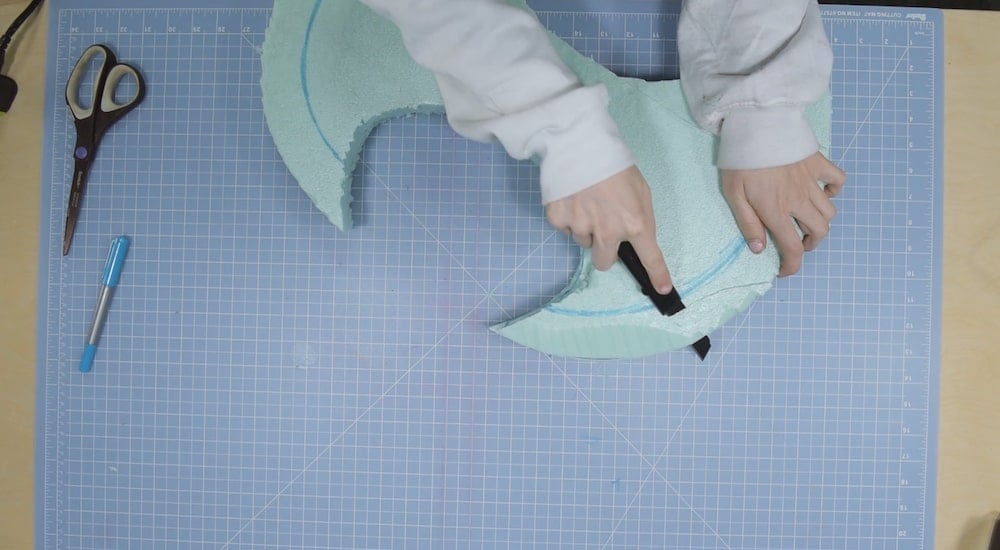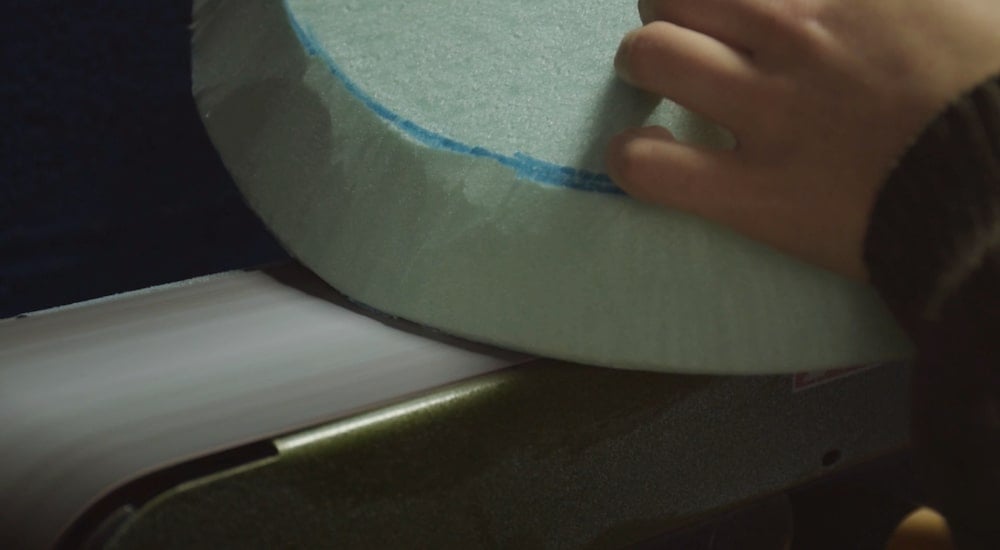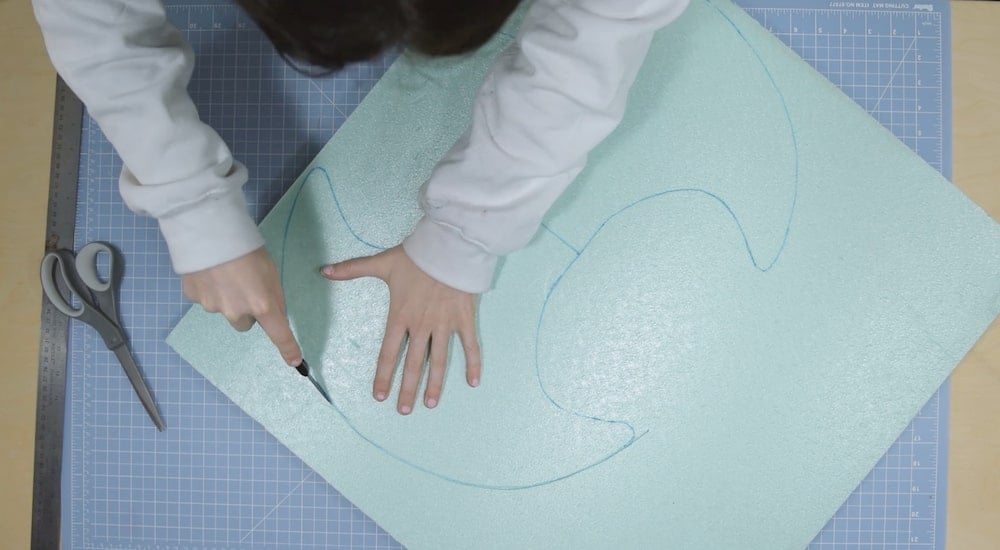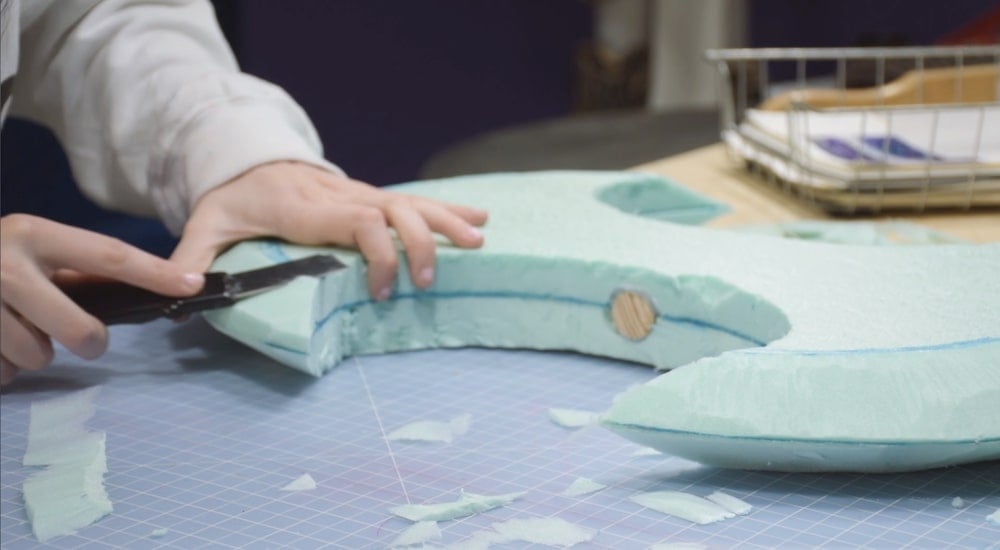There are two sides to cosplay: making and wearing. While both are equally important and challenging, one of the most rewarding parts of any build is figuring out how to make impossible, fictional designs wearable and to scale. Especially when it comes to oversized props and weapons, the scale and weight of those items become a real issue. Thankfully, there’s a material that many cosplay makers have discovered that’s light enough to build giant props with that you can still carry around all day — insulation foam.
Insulation foam (or XPS foam) is a light yet dense material that has several different applications in cosplay making and, especially, in prop making. In this post, we’ll explain the best strategies for using insulation foam for cosplay as well as the advantages and disadvantages of working with the material.
When to Use Insulation Foam for Cosplay

Insulation foam makes a great material for large-scale prop builds because it’s dense yet light in weight while also being rigid in shape. For starters, a lightweight material that holds its shape is perfect for large props for logistical reasons in general. While it would be much more difficult in general to create props and weapons from real metal, wood, etc., those materials are also much heavier than insulation foam. Considering that most cosplay armor feels heavy to wear even when it’s made of foam, lugging around a solid metal weapon all day is not only dangerous but also really tiring. Insulation foam, however, can mimic the look of other materials while weighing in at a much lighter level, making the huge, oversized weapons that you see in anime or video games much more possible for cosplay.
In another sense, the dense and rigid nature of foam also allows you to build props and weapons that hold their shape. While EVA foam is thinner and more floppy unless you really build up your layers or coat it in something like thermoplastic, insulation foam is much stiffer and can hold its shape pretty much regardless of its design or size. If you don’t want your giant sword to flop over in the middle like a noodle, insulation foam is a great choice. You can even choose to coat insulation foam with something that would further increase its density, like thermoplastic.

Finally, insulation foam is great for props of any size that have intricate details or are constructed with sculptural shapes. Due to the nature of insulation foam, the best way to shape your foam is by carving and cutting away from a block or sheet of foam to reveal the shape of the object you’re making. Instead of building separate pieces and figuring out how to attach them together to make your prop, you can simple carve larger sections, or even the entire object, from one block of foam and then sand it down to your desired shape. The carving can be done with either blades/box cutters or with heat.
You might have noticed that we haven’t mentioned armor builds along with cosplay weapons. Unfortunately, insulation foam is not the best choice for costume pieces and armor that actually attach to your body because it doesn’t have the flexibility to move with you nearly as easily as EVA foam does. For armor builds, we’d recommend EVA foam because it provides much more “give” and flexibility for moving parts.
Benefits of Insulation Foam

Aside from its main properties of density and light weight, there are plenty of benefits to working with insulation foam on your prop and weapon builds. Here are just a few of the advantages of using insulation foam in cosplay:
- Insulation foam is light to carry and carve into.
- It’s not very expensive and is sold in boards of a variety of different sizes and thicknesses, so you can get exactly what you’ll need for your build for relatively cheap.
- It’s density makes it easy to sand down to a smooth texture, as opposed to styrofoam or other less dense foams that will break and crumble.
- Insulation foam will always hold the shape you carved into it.
- Insulation foam can be carved using a heat source, like a soldering iron.
- Once sealed, insulation foam is completely paintable using spray paints or acrylics, depending on your preferences. While sealing is necessary, insulation foam is less porous than other foams, making it stronger and easier to paint.
- The dense material can mimic the look of metal, wood, plastic, and more.
- A variety of adhesives can work on insulation foam, including CosBond Attach & Build adhesive sheets, spray adhesive, Modpodge, wood glue, Liquid Nails construction adhesive, and in less conspicuous areas, hot glue.
- It’s also fairly easy to attach insulation foam to other materials like PVC pipe, wooden dowels, and plastics that you need to complete your props and weapons.
Insulation Foam Challenges

Every cosplay material has drawbacks, however. While insulation foam is a great option for just about any cosplay weapon or prop, there are some disadvantages to working with it that may affect your building process. Here are some challenges you might run into when working with insulation foam:
- Insulation foam’s rigidity means it keeps it shape, sometimes to a fault. It is possible for insulation foam to snap off if you happen you hit your prop on something or someone runs into/steps on it. This can also make insulation foam pieces tough to ship and travel with unless you design your prop to disassemble into smaller pieces.
- It’s also nearly impossible to bend insulation foam, so if your prop has bent or rounded edges, you’ll have to carve them in instead of bending them under heat.
- Insulation foam can potentially have unwanted texture that you’ll have to sand down before sealing and painting.
- When working with insulation foam, you’ll need to do so in a well-ventilated area, or you’ll need to wear a mask to avoid breathing in all of the little foam particles you sand or carve off.
- Insulation foam can react chemically to certain adhesives, like contact cement and most super glues, which cause the foam to melt and break down. Hot glue can also melt insulation foam, so it’s best used only in handle pockets or other inconspicuous areas where any melting will be hidden.
Build Bigger with Insulation Foam

When it comes to cosplay, you’re at the mercy of the characters you choose to make. Fictional characters from games, anime, comics, and more don’t always abide by traditional design principles, let alone the laws of physics. Their props and weapons, their swords and shields and staffs and scepters, present some huge challenges to anyone trying to cosplay accurately. With insulation foam, those impossible props become much more possible thanks to its sturdy and sculpt-able nature. When your material is light and durable, you can defy physics too and build weapons that are larger than life.